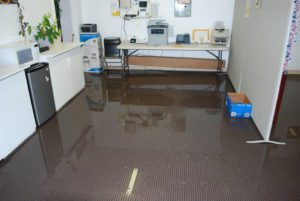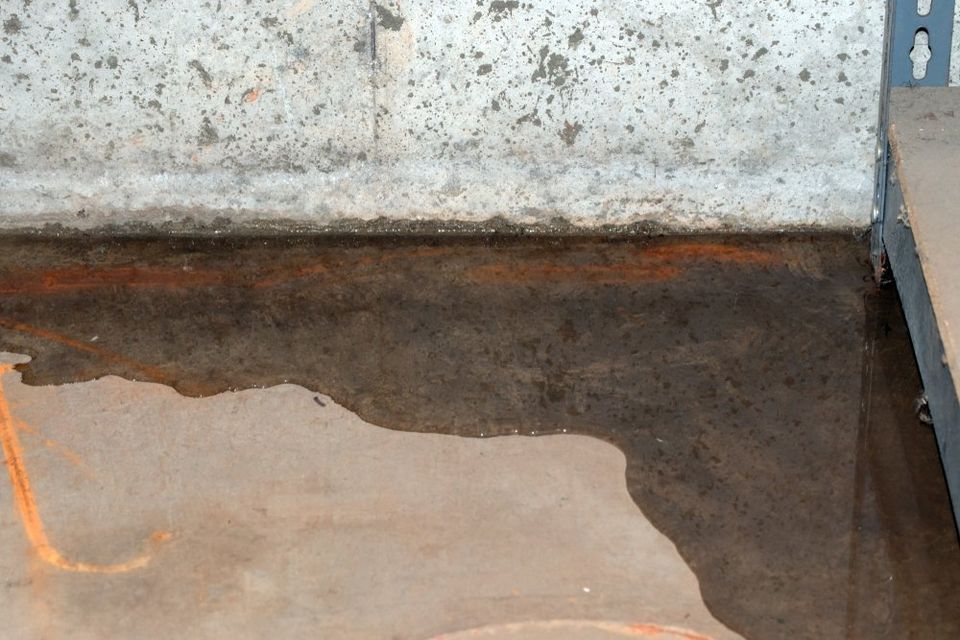We have found this post relating to Hacks to detect leaks directly below on the internet and felt it made sense to discuss it with you in this article.

However, climate modification and also global warming have actually hurt the area. As soon as risk-free have actually experienced much more flooding and groundwater intrusion, several locations that were. The latter can penetrate your house even before it breaks through the surface.
Knowing what indicators to look out for can assist you reduce water damage. Moreover, you need to additionally inspect all your pipes to capture any type of visible leaks. If your basement is always damp, it's extremely likely that groundwater is coming in from under your house or close by.
Enhanced groundwater makes your residence much more vulnerable to floods when it rainfalls. Do not despair, due to the fact that you can still prevent groundwater from harming your precious house.
Focus On Waterproofing the Basement
Don't wait prior to it's too late. Flood shouldn't need to come into your house prior to you waterproof the basement or crawlspace. It's finest to begin when there's still no rain. It will certainly result in a massive problem when groundwater breaks in with rainfall and also flood if you dilly-dally.
Fill the basement with more concrete to avert any issues caused by groundwater. Pouring concrete and executing waterproofing steps seals your basement as well as safeguards it from water invasion.
Think About Setting Up a French Drain System
Best of all, they don't look obvious because these drains pipes appear like a pipeline or trench that can readily blend where it's positioned. This system secures your residence from more issues because it will prevent water from permeating into your foundation.
In addition, it will also stop your floors from flooding. When you install this sort of drainpipe system, you secure your foundation. Because of this, you won't need to fret about major fixings in case of water damages. These are really easy to mount so you can have a brand-new one placed in the existing one that discontinues to function.
Invest in Numerous Sump Pumps
Sump pumps are readily available as well as really budget-friendly in hardware stores on-line. You can set up numerous sump pumps in your basement or crawlspace. Have the tubes placed into a drainpipe or out onto the street. The Visit My Site main objective of this pump is to redirect the water from entering your home. This can shield your residence from increasing groundwater.
A sump pump will certainly provide a layer of security if you really feel concerned regarding groundwater seeping right into your basement. Several favor this because they are quite cheap as well as very easy to install. Pay focus to when you utilize it because it can spike up your energy expenses.
Increase the Property Permanently
Raising your residence permanently is an effective service to prevent groundwater from coming in. The overall process entailed developing a brand-new, higher foundation to lift the home over the flooding area.
Applying these suggestions will help safeguard your residence and also items versus water damages. However if you've done every little thing that you perhaps can yet water still seeps into your residence, call a water repair company immediately to aid you get back on course.
If your cellar is always damp, it's extremely most likely that groundwater is coming in from underneath Quote & Schedule your home or close by.
Raised groundwater makes your house more vulnerable to floods when it rainfalls. Don't misery, since you can still prevent groundwater from harming your beloved residence. Load the basement with even more concrete to prevent any kind of problems caused by groundwater. A sump pump will certainly provide a layer of security if you feel anxious about groundwater seeping right into your basement.
How to Restore Hardwood Flooring After Water Damage
How to repair hardwood floor water damage
Wear protective gear such as gloves, rubber boots, and a mask.
Stop the flow of water if the flooding occurred due to a burst pipe, washing machine failure or water heater failure.
Turn off the power to the affected room until the water has been removed.
Assess the damages before you begin the restoration to determine whether to clean up or replace the floor. Take photos, list damaged items, and show them to your insurance company.
Remove any items (carpet, furniture, etc.) from the floor and take them to a dry area.
Open windows and doors to allow moisture to evaporate more quickly.
Start removing the excess water with a wet/dry vacuum cleaner or with mops and old cloth. If the water level is deep, use a pump to drain the water. Ask someone to help so you can finish the task faster and avoid further damage.
Use dehumidifiers, heaters, and fans to speed up the drying process. Place them on top of an elevated surface in the flooded area and close the windows. Direct the fans towards the floor’s surface.
Clean any debris and mud from the floor with a non-abrasive brush and detergent while the heaters, fans, and dehumidifiers are running. Rinse the floor with clean water and continue to dry the floor.Determining the type of flooring and installation
Inspection is always crucial when starting to repair hardwood floor water damage. Hardwood flooring comes in a variety of species, such as oak, pine, maple, and cherry. More and more exotic species are being used in flooring. Every type poses different challenges in the drying process because of the varying levels of moisture absorption.
There are also varieties of flooring that look like wood but are not. These floors will sometimes have a laminate on the surface and a particle board substructure. When moisture seeps beneath these floors, drying is nearly impossible. The inability to dry these surfaces is due to moisture being trapped under the laminate, which acts as a vapor barrier. For more help, call a PuroClean water damage restoration professional to help you evaluate your flooring’s type and condition.
Professionals will also assess the initial installation method of the hardwood flooring. Original installation may be nailed, glued or installed in a floating method.
When nailed floors have suffered from water damage, the nails may lift.
If the floor has been glued onto the substrate, the moisture may release the glue.
In the case of a floating type floor, it may not be true wood and may be a laminated product. Tongue and groove hardwood flooring may “cup†after absorbing moisture.Drying the hardwood floor (patience is key)
Once the technicians determine the wood floor type and installation method, drying can begin. Using surface and/or subsurface drying methods and proper dehumidification, technicians can force airflow beneath the surface of the floor (in a positive or negative manner) to remove this moisture. It may also be necessary to access the floor from below for faster drying.
Effective drying of a hardwood floor is a slow process. It will sometimes take seven to 10 days for the floor to release enough water to halt the forced drying process. Removing all the absorbed water from the floor is expensive and nature must be allowed to assist in the process.
The hardwood drying continues until the wood’s moisture levels reach four percent of the floor’s dry standard. At this point, nature will remove the remaining water, although slowly — anywhere from three to six months. Education in this process is crucial for a successful job. Let the restorations professionals of PuroClean help you dry your hardwood flooring properly.
Repairing the finish
Once the hardwood floor is dry, there may still be damage to the floor finish. Finishes, such as waxes and polyurethane, may inhibit the evaporation of the absorbed moisture. They will sometimes have to be removed in the drying process to allow for moisture removal.
If the hardwood floor cups slightly, the finish may check and crack due to the movement of the wood product. This is a normal part of the drying process. Once the floor is completely dry, the floor can be refinished.
Hardwood floor drying is a specialty. PuroClean restoration professionals have the knowledge to properly evaluate the many types of floors and have specialized equipment to repair hardwood floor water damage.
https://www.puroclean.com/blog/what-should-i-consider-after-a-wood-floor-is-flooded/

We hope you enjoyed our piece on Top leak detection hacks. Thanks for taking the time to read through our content. Those who enjoyed reading our page plz do not forget to pass it around. Thank-you for going through it.